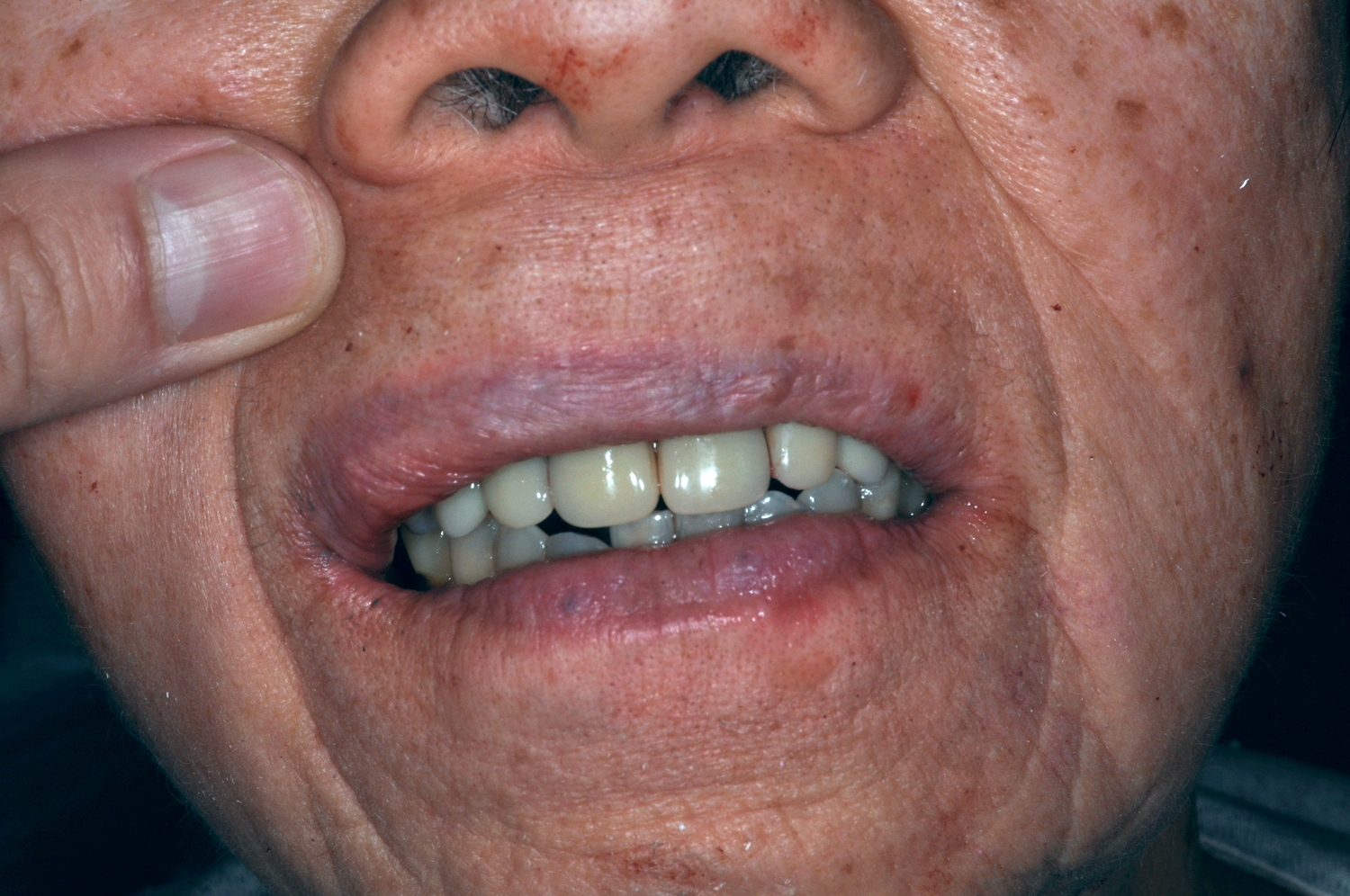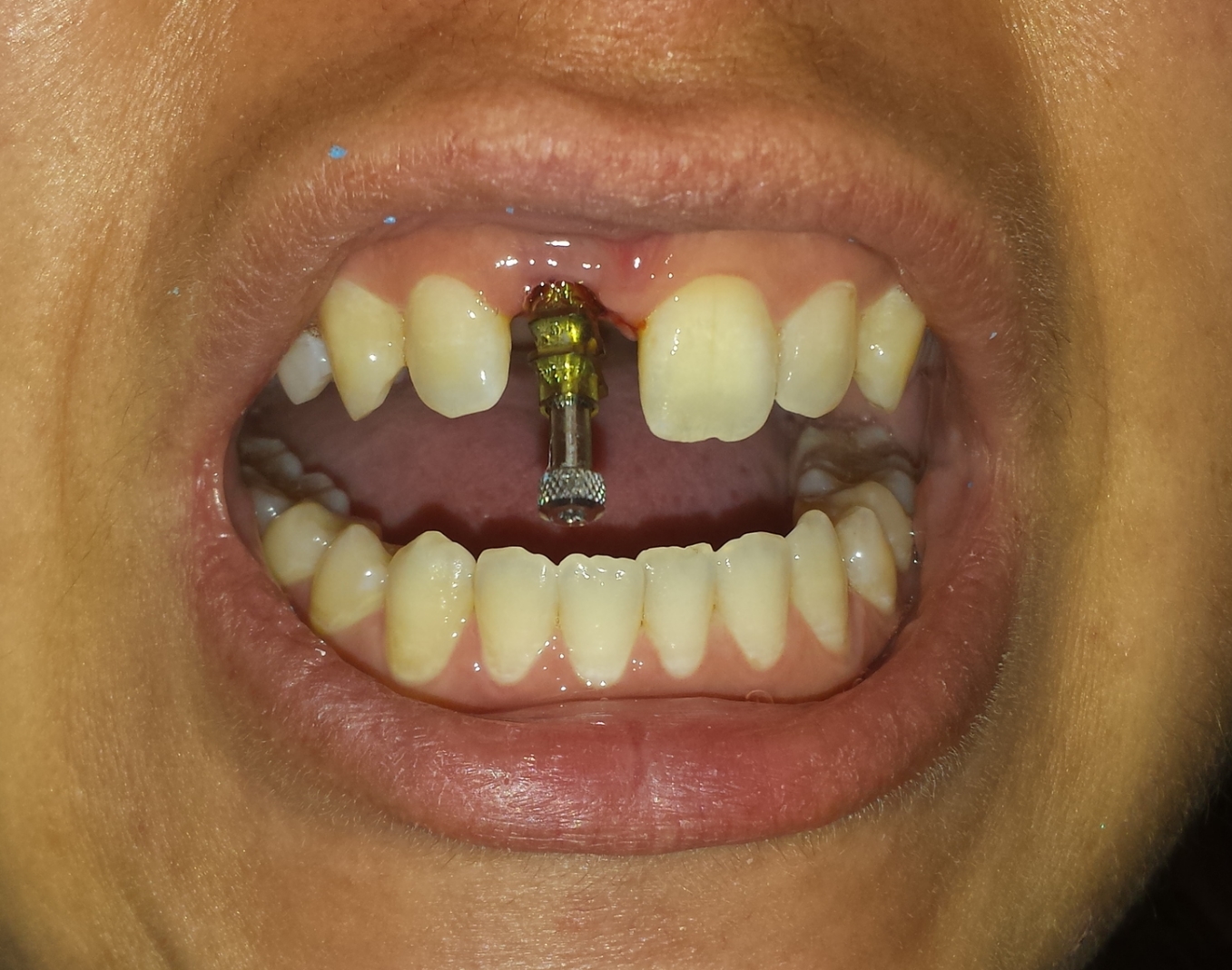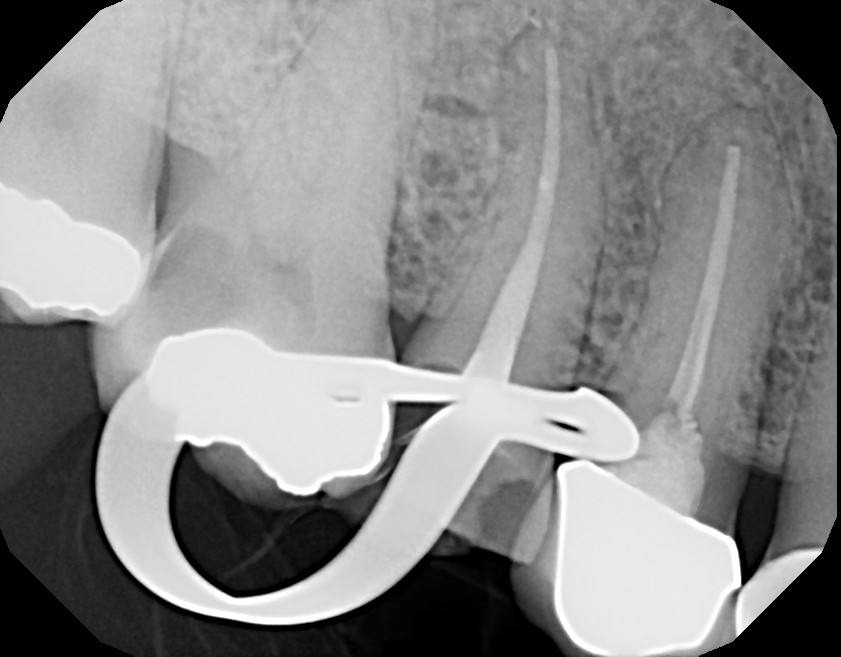IMPLANT RESTORATIONS, CROWNS, VENEERS, COSMETIC RESTORATIONS
Restoration from our patients are shown.
Implant hybrid bridge
I collaborate with board certified periodontist ( gum and implant specialist) Dr. Allan Huang for simple and complicated implant cases. The case below involvesd the removal of all hopeless top teeth with immediate placement of 6 implants by Dr. Allan Huang. This was followed by the conversion of a full upper denture into a temporary bridge by me and my dental team. We then waited for 6 months to check for proper healing. After 6 months, a new definitive titanium/ porcelain implant bridge is fabricated and delivered to patient.
Implant crowns
One of the most rewarding procedure I do in my practice is restoration of missing teeth with implants. In prior years, the norm to replace missing teeth were either with denture or bridge. Dentures are adequate and affordable, but are not totally comfortable. They help replicate the chewing capacity of missing teeth, but not entirely. They need to be removed and cleaned every night, and feels bulky. Bridges are great and can be made to look very natural. They are a great solution to replacing missing teeth in most cases, but it does have it's drawback. In order to replace one missing tooth, two adjacent teeth must be shaved down to provide enough bulk to support the missing tooth in the middle. With the advent of implants, missing teeth can be replaced without involving the adjacent healthy teeth. In the case below, patient lost her front tooth due to trauma resulting resorption of the tooth from the inside. The tooth was removed and an implant was placed the same day by periodontist Dr. Allan Huang at Significance Dental Specialist. After 4 months of healing to ensure the implant has integrated with the bone, the patient is seen in my office. My staff and I remove the healing cap on top of the implant. We then try in an impression coping, verifying it's fit with x-ray to confirm all the implant components are seated correctly. Afterward, we take an impression of the implant and send it off to the lab for them to fabricate custom abutments and crowns as shown in the above pictures.
What I love about dental implant is that it allows me to practice conservative dentistry. I don't have to shave down other healthy teeth in order to replace one missing tooth. This allows the patient to clean her tooth more easily and improve overall oral hygiene. Long term wise, the less teeth we shave down, the less chance of having problems on them. To me, that is the best type of dentistry.
TEMPORARY IMPLANT CROWN
As an option after implant is placed, we fabricate temporary crowns after placement of implants. The benefits are as follow
1) Not having to wear a temporary denture or clear aligners while waiting for implant to integrate with the bone
2) More cosmetically pleasing, and not having to remove temporary appliance daily
3) Preserve and contour shape of gums between adjacent resulting in better esthetics results in final crown.
ROOT CANALS
When the nerve tissue inside your tooth is damaged beyond what the tooth itself can repair, you often get infection or really bad pain. The only way to get rid of this pain is either by 1) pulling the tooth out or 2) getting the dreaded root canal.
Extracting a tooth is often a last resort. It should be done when the tooth is so badly broken down that it can no longer be saved. In cases when there is severe infection even root canal surgery can not get the tooth to become better, it should be removed and replaced with an implant, bridge, or denture.
Root canal has an aura of being dreadfully painful and tortuous. Modern technology and techniques has made it more comfortable and improve the long term outcome of the procedure. In the following pictures I shall guide you through a case I did to show you how a typical case is performed.
The patient had a very large cavity on the premolar on the top right side of her mouth. Notice in the first picture how close the cavity is to the beginning of the nerve. I had my staff set out the root canal cart which has my root canal instruments and equipment. I proceeded to numb up all the surrounding gum around the tooth to MAKE SURE my patient has no feeling around the tooth. I poked the gum with a sharp explorer to make sure the patient has no pain. At that point, I proceeded to remove the cavity until I meet the nerve chamber. During this whole time, I am monitoring how the patient is feeling, asking her if she has pain and watching for her body language to see if she has pain. I then put a rubber dam around the tooth, this is done to isolate the tooth from the rest of the mouth. It is a little uncomfortable at first, but is very important to help keep debris and saliva from entering the nerve chamber and possibly contaminating it. In addition, it keeps away the irrigation fluid and paste I use to clean my patient's tooth from going into her throat. Once the tooth is isolated, I proceed to use a series of files to enter the canals where the nerves are located. With the help of the machine called a "Root Zx" I locate the end of each nerve. I meticulously use a series of Nickel Titanium files to enter each canal to remove the nerve and chemically clean all the inside with solutions that sterilize the nerve canals.. Once completed, I use a paper cones to dry out the inside of each nerve canals. Upon checking that the nerve canals are dry, I try in rubber sticks called "gutta percha" in each canals. These gutta percha will help seal up the inside of the nerve canals to prevent bacterial invasion of the roots.
Patients often ask why I take so many x-rays when I do root canals. The answer is because the roots of every teeth are different. They have weird configurations that require me to take different pictures at different angles. Notice how on one picture the tooth looks like it has only one root. When I changed the angle, you can see there are two nerve canals meeting each other near the end of the root. This was the situation in my patient's case. I only take as many x-rays as are needed to precisely give me details of the the tooth I work on.After I tried in in the gutta percha as was satisfied that they are in appropriate length, I use an instrument called a System B to sear of the rubber material. I then use another machine called Obtura to fill in all the nooks and crannies in the canals. Once that is completed, I put in a temporary filling and provided pain medication for the patient. The patient comes in another visit and I check to see that she has no pain. Once I am confident that patient is pain free, I would proceed to fix the weak tooth with a crown. The crown help protect the remaining tooth .
According to the American Association of Endodontics, 25 million root canal procedures are done safely and effectively every year. I want to put you at ease if and when you need this procedure to be performed. Is it a walk in the park? No, but it can be done safely and comfortably. I perform many root canal procedures, but I always put my patients' interest first. If I deem that the tooth 1)is severely infected 2) has very small narrow nerve canals 3) has very curvy roots, I would refer my patient to a root canal specialist ( endodontist). Endodontists are trained dental specialist who have additional training in the specialized field of Endodontics. The endodontists who I trust with my patients are 1) Dr. John Duong of Lakeview Dental and 2) Dr. Vinnie Chen of Significance Dental Specialists. Both have treated my family members and I have the utmost faith in their abilities.
EXTRACTIONS
Most extractions are performed at our office. Whenever needed, cases are referred to board certified oral surgeons for appropriate procedures.
GENERAL CLEANING AND DEEP ROOT CLEANING
When you have healthy gums, I recommend a regular cleaning (adult / child prophy). However, when you have bleeding gums, bone loss, or loose teeth, you often need a deep root cleaning, also known as a scaling root planing. This will often improve the overall gum health and reduce or stop bleeding. With recalls of 4-6 months, along with improved home oral hygiene, this will extend the life of your teeth. In cases in which non-surgical root cleaning doe not significantly improve gum health, I may refer you to a board certified gum specialist ( periodontist ) for gum surgery.
PEDIATRIC DENTISTRY
My staff and I cater to the very young and the young at heart. Most children can be seen and treated safely at out office. However, cases in which your child can not be safely treated, referrals are made to board certified pediatric dentists for treatment under sedation.
Town & Country Dental
DR. PHAN NGUYEN
7225 S. DURANGO DR. SUITE #102
LAS VEGAS, NV 89113
(phone) 702 558 8696
(fax) 702 558 3116



























































